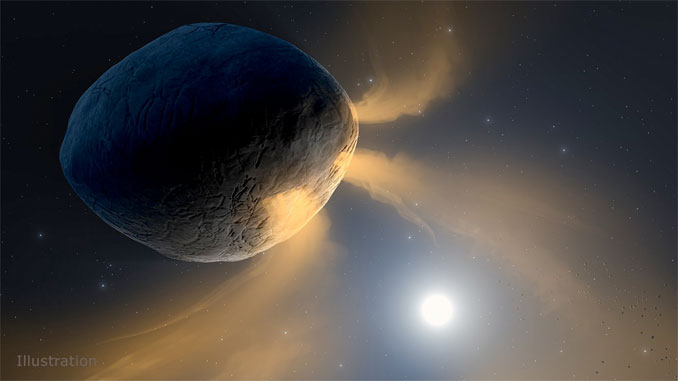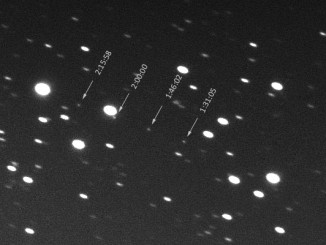
The 5.8-kilometre-wide (3.6-mile-wide) near-Earth asteroid Phaethon brightens as it nears the sun, passing well within the orbit of Mercury and heating up to some 750 C (1,390 F). Any water, carbon dioxide or carbon monoxide ice would have been baked out long ago, but the asteroid still brightens as it nears the Sun, much like a comet when sub-surface ice vaporises.
A new study suggests the culprit may be sodium fizzing from Phaethon’s rocky surface into space. The conclusion is intriguing because it may help explain the annual Geminids meteor shower
“Phaethon is a curious object that gets active as it approaches the Sun,” said study lead Joseph Masiero, a scientist at IPAC, a research organisation at Caltech. “We know it’s an asteroid and the source of the Geminids. But it contains little to no ice, so we were intrigued by the possibility that sodium, which is relatively plentiful in asteroids, could be the element driving this activity.”
Repeated passes close to the Sun would have vaporised sodium on the surface, but interior deposits could still heat up and boil away into space through cracks and fissures in the asteroid’s crust. Those jets could provide the push needed to blow rocky debris off the surface and into space, explaining both the brightening of the asteroid and the Geminids meteor shower.
“Asteroids like Phaethon have very weak gravity, so it doesn’t take a lot of force to kick debris from the surface or dislodge rock from a fracture,” said said co-author Björn Davidsson, a scientist at NASA’s Jet Propulsion Laboratory.
“Our models suggest that very small quantities of sodium are all that’s needed to do this – nothing explosive, like the erupting vapour from an icy comet’s surface; it’s more of a steady fizz.”
The researchers tested their theory by heating samples of a meteorite that fell over Mexico in 1069 that’s believed similar in composition to Phaethon, known as a carbonaceous chondrite.
“We simulated this heating effect over the course of a ‘day’ on Phaethon, its three-hour rotation period, and, on comparing the samples’ minerals before and after our lab tests, the sodium was lost, while the other elements were left behind,” said co-author Yang Liu, a JPL researcher.
“This suggests that the same may be happening on Phaethon and seems to agree with the results of our models.”
The results support the idea that categorising small bodies as either asteroids or comets is oversimplified. The distinction not only depends on the amount of ice present, but also on the presence of elements that vaporise at higher temperatures.
Said Masiero: “Our latest finding is that if the conditions are right, sodium may explain the nature of some active asteroids, making the spectrum between asteroids and comets even more complex than we previously realised.”



